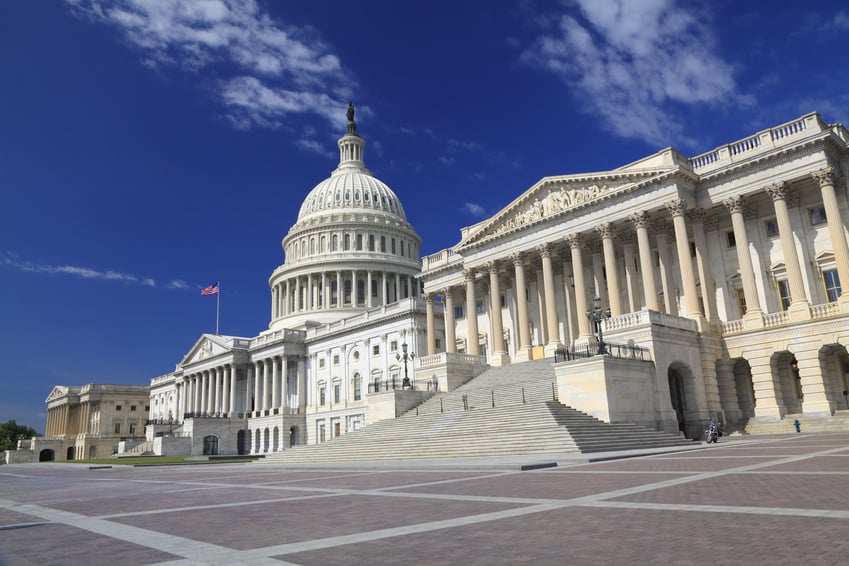On December 20, 2019, the Treasury and IRS released proposed regulations1 implementing the Tax Cuts and Jobs Act’s changes to section 162(m)’s $1,000,00 limit on the deductibility of “covered employee” compensation.2 In key part, the TCJA3 eliminated the exception from section 162(m) for performance-based compensation and expanded the covered employees and publicly held corporations subject to section 162(m). The Proposed Regulations build on this initial expansion of the 162(m) limit, dramatically increasing the extent to which the compensation of current and former executives will be non-deductible and introducing significant complexity into the identification and tracking of an ever-expanding pool of covered employees. In this summary, we address some of the most significant changes that taxpayers should note:
The particularly broad interpretation of the “predecessors” whose covered employees become covered employees of a publicly held corporation and its impact in corporate transactions.
- The expansive definition of the “publicly held corporations” subject to 162(m) and elimination of the IPO transition period for newly public companies.
- The new application of the 162(m) deduction limit to compensation paid by partnerships.
- The ability to modify certain arrangements in view of the new 162(m) rules without violating section 409A, which may require action by December 31, 2020.
- Clarifications of the grandfathering rule, including the impact of clawbacks and vesting acceleration and the treatment of severance.
1. Expansion of Covered Employees has a Significant Impact in Corporate Transactions
The Proposed Regulations confirm the guidance in Notice 2018-684 that the covered employees of a publicly held corporation include:
- Its Principal Executive Officer and Principal Financial Officer at any time during a tax year,
- Its three other most highly compensated executive officers for the tax year, regardless of whether the officer’s compensation is subject to disclosure for the last completed fiscal year under SEC rules or whether the officer is employed at the end of the tax year, and
- Anyone who was a covered employee of the corporation or a predecessor for any tax year beginning after December 31, 2016.
The above rules generally apply for tax years ending on or after September 10, 2018, except with respect to two items not addressed by Notice 2018-68, both of which are addressed in the Proposed Regulations in a manner unfavorable to taxpayers.
First, the Proposed Regulations state that a company with a fiscal year and tax year which do not align (e.g., in the case of a short tax year due to a corporate transaction) must determine its three most highly compensated officers for the tax year based on the SEC summary compensation table rules, even if the corporation is not preparing a summary compensation table for the tax year. This rule applies to tax years beginning on or after December 20, 2019, i.e., effective for the 2020 calendar year in the case of calendar year taxpayers.
Second, the Proposed Regulations take what appears to be the broadest possible approach to the “predecessor” issue. Under this approach, a publicly held corporation’s covered employees will include the covered employees of any of the following “predecessor” entities, if such individuals perform services – whether as an employee or nonemployee – for the publicly held corporation:
| Transaction | Predecessor |
| Merger/Reorg. | A publicly held target corporation that is acquired or is the transferor in a corporate reorganization under section 368(a)(1). |
| Spin-off | A publicly held distributing corporation in a spin-off, to the extent that its covered employees commence services with the publicly held spun-off corporation within 12 months before or after the spin-off. (Such employees also remain covered employees of the distributing corporation.) |
| Stock-deal | A publicly held target that, in a stock acquisition, becomes a member of a publicly held affiliated group (under newly expanded affiliated group rules). |
| Asset deal | A publicly held target of which at least 80% of the operating assets are acquired over a period of 12 months, to the extent that its covered employees commence services with the publicly held acquirer within 12 months before or after the asset deal. |
| Private – Public Transition | An acquired privately held corporation, if it was previously public and the acquisition occurs before the 3-year anniversary of the due date for the acquired private corporation’s federal tax return for the last tax year for which it was public. |
The regulations also capture predecessors of predecessors, so any of the above predecessors of corporations that become part of a publicly held corporation’s affiliated group under section 162(m) are also covered employees of the publicly held corporation. The predecessor rule is proposed to apply to corporate transactions for which all events necessary for the transaction occur on or after the date of publication of the final rule in the federal register, or in the case of a private – public transition, to a private company that becomes public again on or after publication of the final rule. Until the final regulations are effective, taxpayers may rely on the definition of predecessor in the proposed rules or on a reasonable good faith interpretation of the term “predecessor.” However, the preamble states that it would not be a reasonable good faith interpretation to exclude as a predecessor a publicly held target corporation of which (i) the stock or assets are acquired in a transaction to which section 381(a) applies or (ii) at least 80% of the total voting power, and at least 80% of the total value of, the stock is acquired. Given the limited deference given to regulation preambles, and the fact that the Treasury could easily have interpreted a predecessor to include only an alter ego of the public company, taxpayers who acquire a public company before the effective date of the final regulations have a difficult decision as to how they reasonably interpret the statute before the final regulations become effective.
With these statutory interpretations, the Proposed Regulations introduce significant complexity to identifying and tracking the individuals who are permanently treated as covered employees. This is especially true in the context of corporate transactions, likely resulting in an ever-increasing amount of required diligence. Publicly held corporations that acquire predecessor corporations will have to maintain a full inventory of all individuals who were covered employees of each such predecessor (or of any predecessors to those predecessors) for any tax year after 2016. Given the complexities that arise and the fact that the Treasury has chosen the broadest possible approach to defining a predecessor, taxpayers and their trade organizations should consider commenting on this aspect of the Proposed Regulations in hopes of obtaining a more taxpayer favorable definition of the term predecessor, as well as a more lenient effective date.
2. Expansion of “Public” Companies subject to 162(m) and Elimination of IPO Transition Rule
The Proposed Regulations confirm that a “publicly held corporation” is a corporation (i) with any class of securities (including debt) that is required to be registered under Section 12 of the Exchange Act5 or (ii) that is required to file reports under Section 15(d) of the Exchange Act (even if not listed on any exchange). However, the Proposed Regulations expand the application of 162(m) to public partnerships that are treated as corporations under section 7704, companies that own publicly held disregarded entities and S corporations that own publicly held QSubs. The rules also expand the existing rules on affiliated groups, including to capture privately-held companies with a publicly held subsidiary.
The Proposed Regulations also confirm that foreign private issuers that meet the requirements of a “publicly held corporation” will be subject to 162(m). However, recognizing that foreign private issuers are not generally required to disclose executive compensation under the SEC’s disclosure rules, the IRS requests comments on whether it should design a safe harbor for such issuers to determine their three most highly compensated executive officers.
In one piece of good news, the Proposed Regulations clarify that the determination of a publicly held corporation is made as of the last day of the corporation’s taxable year, which means that companies whose filing obligation or registration is suspended as of such date are not subject to 162(m).
However, in less good news, the Proposed Regulations provide that a company that becomes publicly held after December 20, 2019 will immediately become subject to the section 162(m) limit, eliminating prior transition relief that generally afforded such companies more than three years of exemption from the 162(m) limit.
3. Expansion of Remuneration subject to 162(m), including Amounts Paid by Partnerships
The TCJA and Notice 2018-68 punted on the question of the application of the deduction limit to compensation paid by a partnership to a publicly held corporate partner’s executives, commonly occurring in the so-called “UP-C” or “UPREIT” partnership structure. However, the Proposed Regulations address this issue head-on. The Proposed Regulations clarify that the publicly held corporation must take into account its distributive share of the partnership’s deduction for compensation expense paid to the publicly held corporation’s covered employee and aggregate that distributive share and the corporation’s otherwise allowable deduction for compensation paid directly to that employee in determining the amount allowable to the corporation as a deduction for compensation under section 162(m).
For example, assume a publicly held Corporation T and a privately held Corporation S form a general partnership and, for 2021, a covered employee of Corporation T performs services for the partnership and receives $800,000 from the partnership for those services, $400,000 of which is allocated to Corporation T. Corporation T’s $400,000 share of the partnership’s deduction for the compensation expense is aggregated with Corporation T’s deduction for compensation paid directly to the covered employee by Corporation T, if any, in determining the amount allowable as a deduction to Corporation T for compensation paid to such covered employee for Corporation T’s taxable year 2021. Notably, the result is the same whether the covered employee performs services for the partnership as a common law employee, an independent contractor, or a partner, and whether the payment is a payment under section 707(a) or a guaranteed payment under section 707(c).
As this is a dramatic departure from the prior application of the 162(m) rules to compensation paid by partnerships, the Proposed Regulations provide transition relief for current compensation arrangements. Accordingly, the rule with respect to compensation paid by a partnership will apply to any deduction for compensation that is otherwise allowable for a taxable year ending on or after December 20, 2019 but will not apply to compensation paid pursuant to a written binding contract in effect on December 20, 2019 that is not materially modified after that date. Of course, this transition relief is subject to all the interpretive issues that have arisen with respect to the TCJA grandfather rule.
4. Coordination with Section 409A
The preamble to the Proposed Regulations indicates that the regulations under section 409A governing nonqualified deferred compensation arrangements will be modified in light of the changes to section 162(m). As a result, there may be planning opportunities that companies may wish to consider that would require action by December 31, 2020.
As background, a payment of compensation may be delayed past the originally designated payment date without violating section 409A to the extent the service recipient reasonably anticipates that, if the payment were made as scheduled, the service recipient’s deduction with respect to such payment would not be permitted due to the application of section 162(m).
Given that amounts that might previously have quickly become deductible under the former 162(m) (e.g., after termination of employment) now might never become so deductible (due to the new “once a covered employee, always a covered employee” rule), the preamble to the Proposed Regulations indicates that the section 409A regulations will be amended to permit companies to (i) delay scheduled payment of grandfathered amounts to qualify for deduction under section 162(m), without delaying payment of non-grandfathered amounts; and (ii) amend deferred compensation arrangements to eliminate provisions requiring the company to delay payments on account of the deduction limitation under section 162(m), provided the amendment is made by December 31, 2020. Further, the foregoing should not result in a violation of section 409A or a material modification that would negatively impact the grandfathered status of the compensation arrangement.
5. Confirmation and Clarification of Grandfathering Rules
Under the TCJA’s grandfathering rule, the new 162(m) rules do not apply to remuneration provided pursuant to a written binding contract in effect on November 2, 2017 which is not modified in any material respect after that date. To determine whether a written binding contract exists, taxpayers still need to apply the same ambiguous standard as to whether the corporation was obligated to pay the amounts under applicable law. However, in noteworthy clarifications, the Proposed Regulations confirm that:
- The presence of a clawback provision will not prevent an arrangement from being grandfathered as a written binding contract provided that the corporation’s right to recoup the compensation is based on the occurrence of conditions that are objectively outside the corporation’s control (e.g., detrimental conduct on the part of an executive).
- Acceleration of the vesting of equity awards or other unvested compensation is not considered a material modification that would cause the loss of any applicable grandfathering. (However, the regulations are silent on whether the extension of the term of an option is a material modification.)
- In determining whether severance is grandfathered, each component of the severance formula must be analyzed separately to determine the amount of severance that is grandfathered. So if a severance payment is based on salary plus discretionary bonus, it is only the amount of the bonus that is required to be paid as of November 2, 2017 based on a prior exercise of discretion that could be grandfathered. Further, if severance includes a base salary-based payment, an increase in base salary that is more than a reasonable cost of living increase causes the loss of grandfathering for the entire severance amount.
Because the Proposed Regulations adopt the prior guidance in Notice 2018-68 on grandfathering and material modifications, these aspects of the regulations apply for tax years ending on or after September 10, 2018.
Closing Remarks
Given the unanticipated breadth of many aspects of the Proposed Regulations, taxpayers should consider whether to comment on areas of concern. Any such comments are due to the IRS by February 18, 2020.
1 REG–122180–18.
2 Section references are to sections of the Internal Revenue Code of 1986, as amended, unless otherwise stated.
3References to the TCJA mean the Tax Cuts and Jobs Act of 2017.
4 Notice 2018-68, issued on August 21, 2018, provided initial IRS and Treasury guidance on the changes made to section 162(m) by the TJCA, including the grandfather rule.
5“Exchange Act” means the Securities Exchange Act of 1934, as amended.








